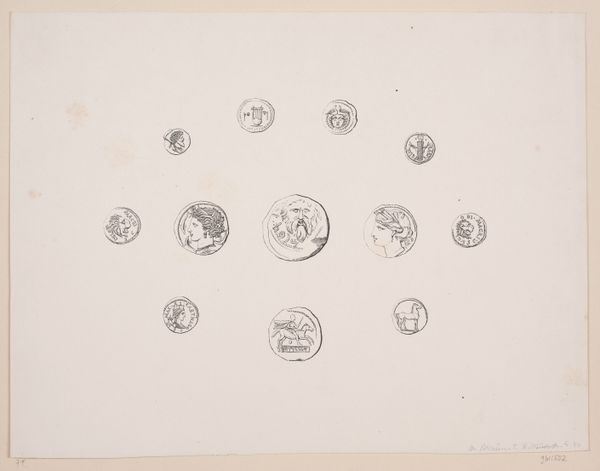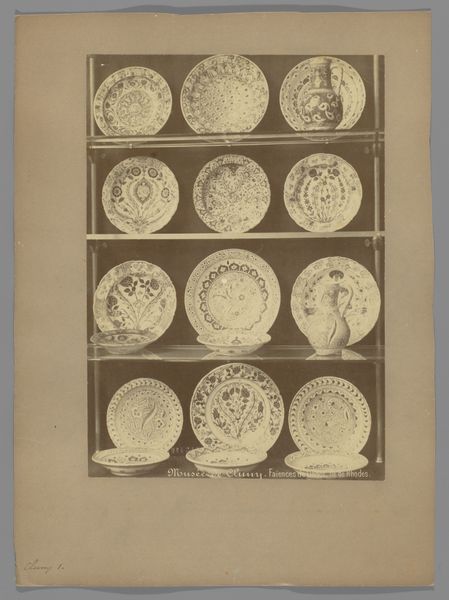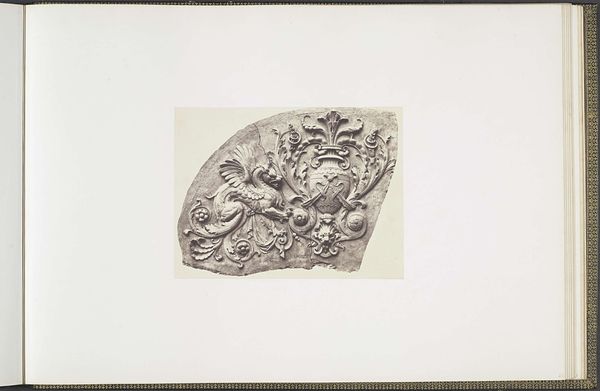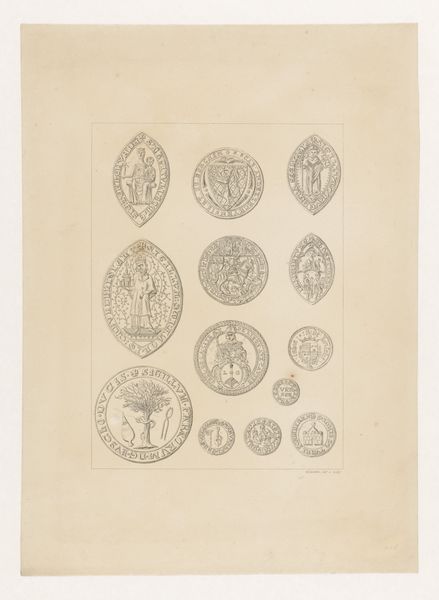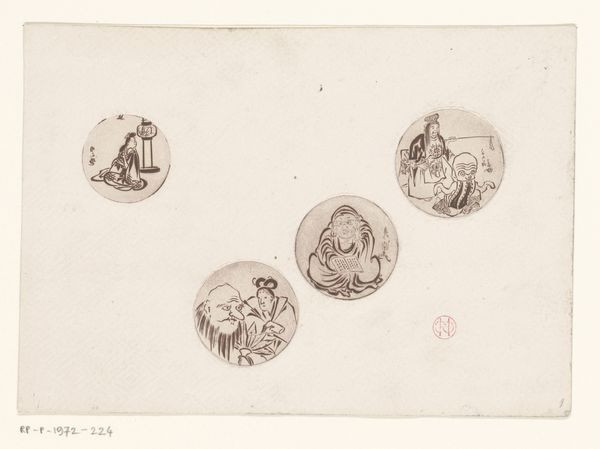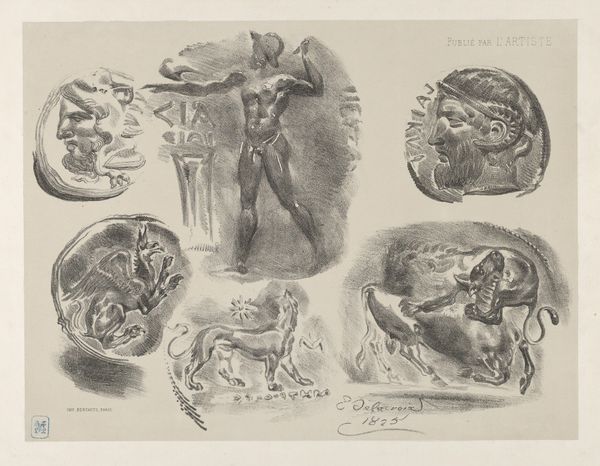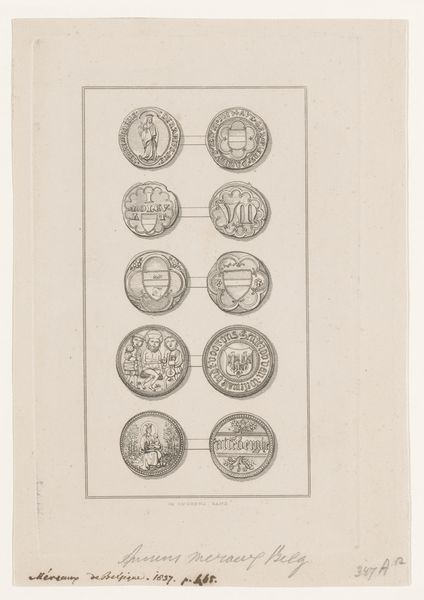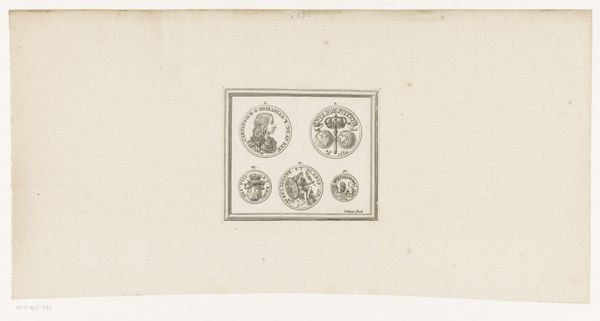
drawing, print, pencil, graphite
#
portrait
#
drawing
# print
#
pen sketch
#
pencil sketch
#
ancient-mediterranean
#
pencil
#
graphite
#
coin
#
profile
Dimensions: Image: 9 5/16 in. × 12 in. (23.6 × 30.5 cm) Sheet: 11 5/8 × 15 7/16 in. (29.6 × 39.2 cm)
Copyright: Public Domain
Curator: This delicate pencil and graphite study is titled “Studies of Twelve Greek and Roman Coins” by Eugène Delacroix, created in 1825. It’s currently held at the Metropolitan Museum of Art. Editor: They’re so beautifully rendered! Look at the way the graphite captures the subtle light on the metal surfaces, suggesting their weight and coolness. Almost sculptural, wouldn’t you agree? Curator: Absolutely. What fascinates me is Delacroix's conscious engagement with antiquity. In the early 19th century, there was a resurgence of interest in classical art, a direct response against the dominant academic traditions. Editor: It makes me wonder about his process. These weren't mass-produced coins, I imagine, so each one he studied demanded slow, careful looking. He really seemed to relish working with a seemingly mundane material. Curator: The creation of prints, then, was instrumental in democratizing access to these treasures and disseminating classical ideals far beyond aristocratic circles. Consider this work alongside period engravings, intended for a growing middle-class audience, eager to claim access to high culture and historical precedent. Editor: Exactly. It is interesting that he does not arrange the coin studies chronologically or according to a specific geographic distribution. By clustering these objects, is Delacroix inviting us to explore these objects not as instruments of power and trade, but as aesthetic artifacts? Curator: Yes! The layout itself emphasizes form and artistic investigation rather than historical precision, further asserting the Romantic idea of artistic license over academic constraint. In the public sphere, it spoke volumes about shifting authority, of artist as the determiner of cultural value. Editor: Looking closer at the details and his rendering style, I see the connection to metalworking processes as a laborious process of shaping material. Each coin, shaped in the hands of laborers, stamped and circulated—there’s an undercurrent here connecting labor and representation that goes beyond a simple act of historical documentation. Curator: An insightful observation that goes well beyond the study of art history! His work embodies the shift towards prioritizing the artist’s subjective experience and asserting the value of individual interpretation. Editor: Ultimately, what began as studies transcends the material. Curator: And, opens a window to broader cultural shifts that redefined the artist's role and aesthetic appreciation.
Comments
No comments
Be the first to comment and join the conversation on the ultimate creative platform.



